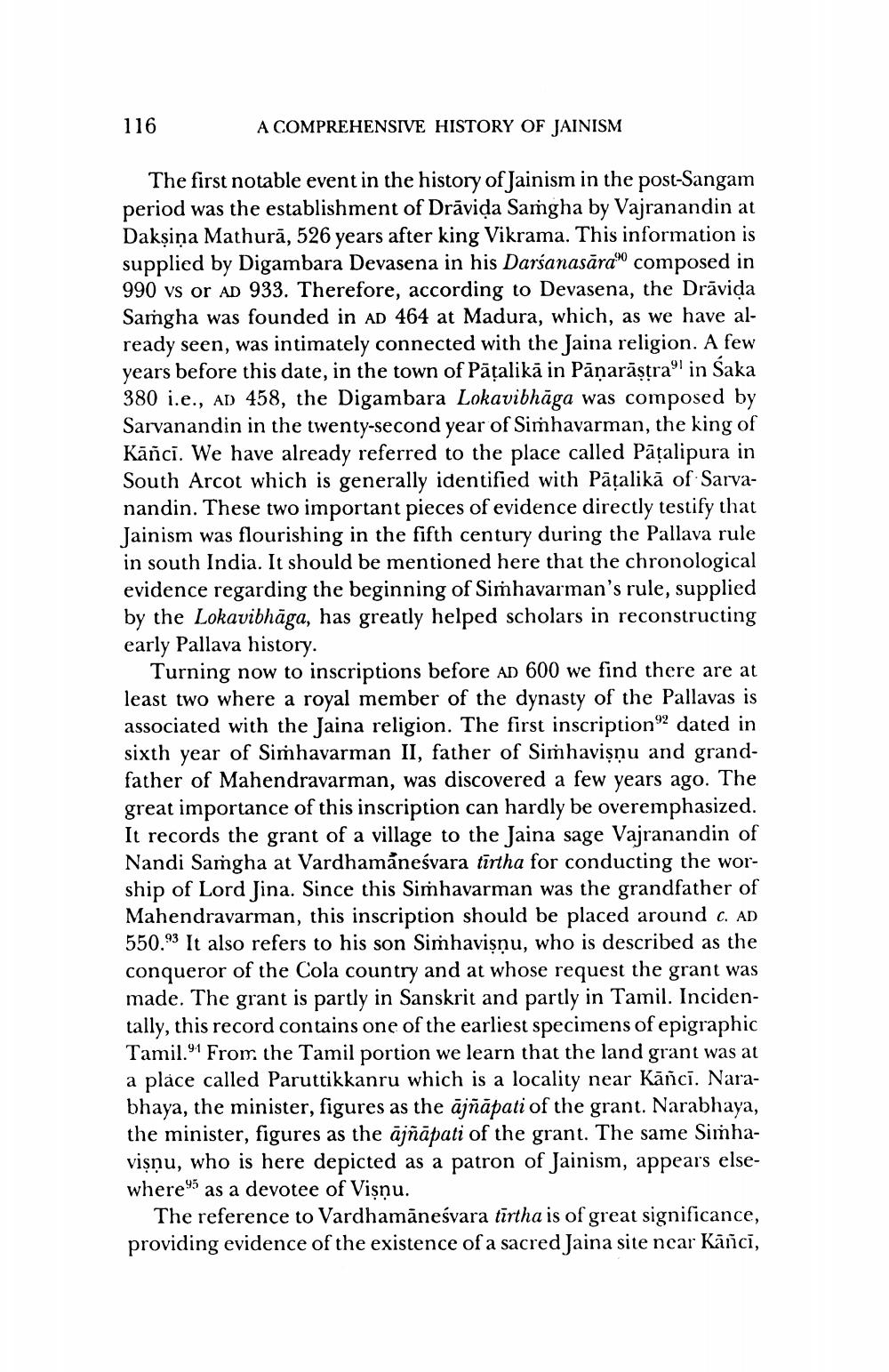________________
116
A COMPREHENSIVE HISTORY OF JAINISM
The first notable event in the history of Jainism in the post-Sangam period was the establishment of Drāvida Samgha by Vajranandin at Dakṣiṇa Mathurā, 526 years after king Vikrama. This information is supplied by Digambara Devasena in his Darśanasāra” composed in 990 vs or AD 933. Therefore, according to Devasena, the Drāvida Samgha was founded in ad 464 at Madura, which, as we have already seen, was intimately connected with the Jaina religion. A few years before this date, in the town of Patalika in Panarastra in Saka 380 i.e., AD 458, the Digambara Lokavibhāga was composed by Sarvanandin in the twenty-second year of Simhavarman, the king of Kāñci. We have already referred to the place called Patalipura in South Arcot which is generally identified with Pāšalikā of Sarvanandin. These two important pieces of evidence directly testify that Jainism was flourishing in the fifth century during the Pallava rule in south India. It should be mentioned here that the chronological evidence regarding the beginning of Simhavarman's rule, supplied by the Lokavibhāga, has greatly helped scholars in reconstructing early Pallava history.
Turning now to inscriptions before AD 600 we find there are at least two where a royal member of the dynasty of the Pallavas is associated with the Jaina religion. The first inscription" dated in sixth year of Simhavarman II, father of Simhavişņu and grandfather of Mahendravarman, was discovered a few years ago. The great importance of this inscription can hardly be overemphasized. It records the grant of a village to the Jaina sage Vajranandin of Nandi Samgha at Vardhamảneśvara tīrtha for conducting the worship of Lord Jina. Since this Simhavarman was the grandfather of Mahendravarman, this inscription should be placed around c. AD 550.93 It also refers to his son Simhavisnu, who is described as the conqueror of the Cola country and at whose request the grant was made. The grant is partly in Sanskrit and partly in Tamil. Incidentally, this record contains one of the earliest specimens of epigraphic Tamil.91 From the Tamil portion we learn that the land grant was at a place called Paruttikkanru which is a locality near Kanci. Narabhaya, the minister, figures as the ajñāpati of the grant. Narabhaya, the minister, figures as the ājñāpati of the grant. The same Simhavisņu, who is here depicted as a patron of Jainism, appears elsewhere as a devotee of Vişnu.
The reference to Vardhamanesvara tirtha is of great significance, providing evidence of the existence of a sacred Jaina site ncar Kanci,




